With 58 places of art and culture, Italy is the Nation that currently holds the largest number of sites included in the list of UNESCO World Heritage.
Three cities of art, together with ten cultural and natural spots, are located in Emilia Romagna and we want to celebrate them all, explaining why these places are essential for the history of the world.
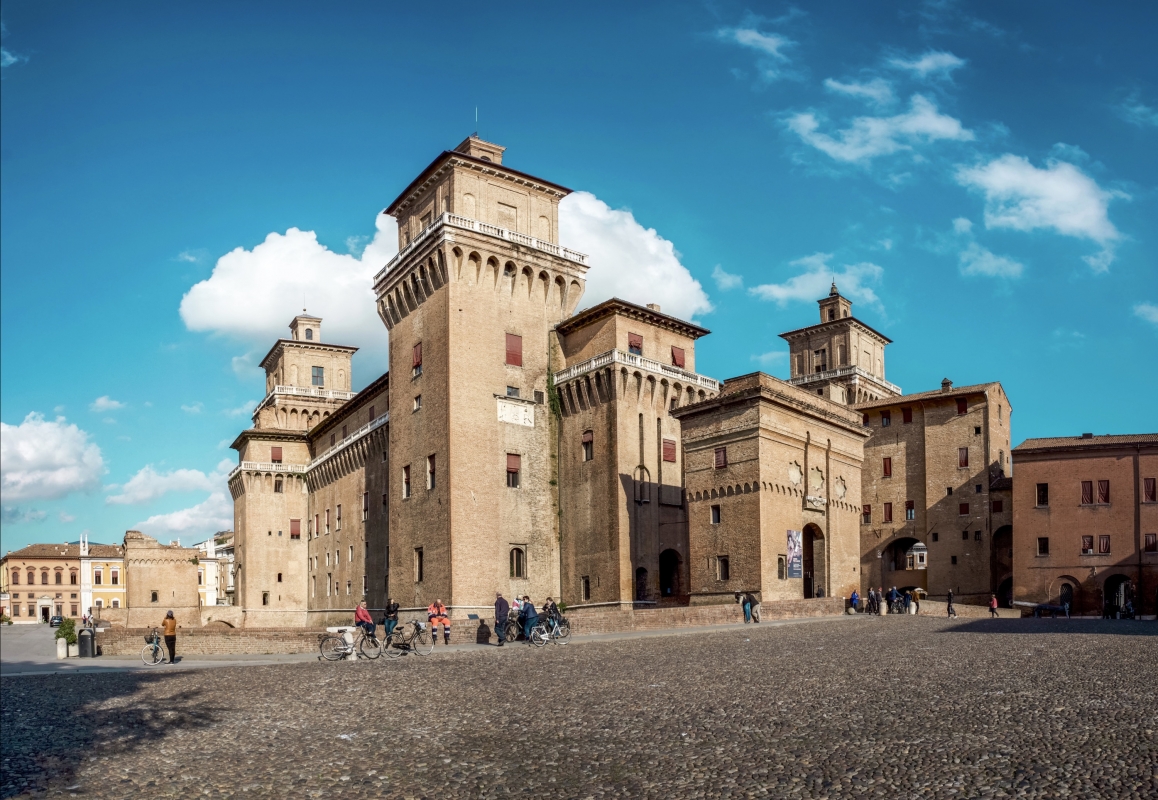
Let’s start with Ferrara, elected in 1995 as the “Renaissance City“. In the fifteenth and sixteenth-century Ferrara was an important intellectual center, home to artists such as Piero della Francesca, Jacopo Bellini, and Andrea Mantegna. Here the ideal city was put into practice, thanks to the urban projects by architect Biagio Rossetti. His “Herculean Addition” was, by extension and organicity, the first project realized in Europe according to the new principles of perspective and marked the birth of modern urbanism. This architectural structure is still intact in Ferrara, whose canons had a deep influence on the development of urbanism in the following centuries.
In 1999 the UNESCO recognition has been extended to the Po Delta, as a planned cultural landscape that notably preserves its original form, and to the Delizie Estensi, (the ancient court residences built by the Este Family between the end of the Middle Ages and the Renaissance in the territory of Ferrara as places of entertainment for princes and courtiers) as works that illustrate in an exceptional way the reflection of Renaissance culture on the natural landscape.
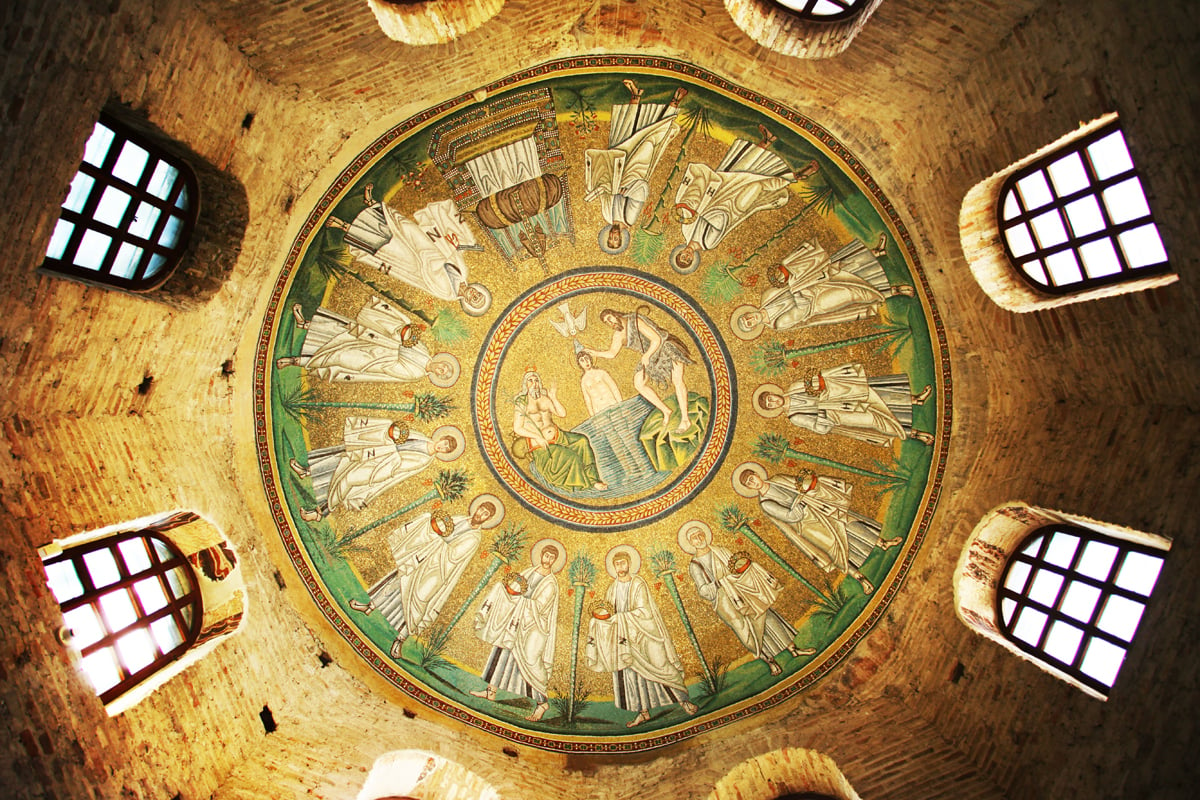
Ravenna, the City of Mosaics, was the capital both of the Western Roman Empire in the fifth century and the Byzantine Empire in Italy until the eighth century. Its eight early-Christian monuments (built between the fifth and sixth centuries) have been declared World Heritage Sites since 1996: the Mausoleum of Galla Placidia, the Neonian Baptistery, the Basilica of Sant’Apollinare Nuovo, the Arian Baptistery, the Archiepiscopal Chapel, the Mausoleum of Theodoric, the Church of San Vitale and the Basilica of Sant’Apollinare in Classe. This complex of ancient monuments is considered unique in the world for the richness and the artistic quality of the mosaic decorations, and it is a testimony of the artistic and religious relationships of an important period of European history.
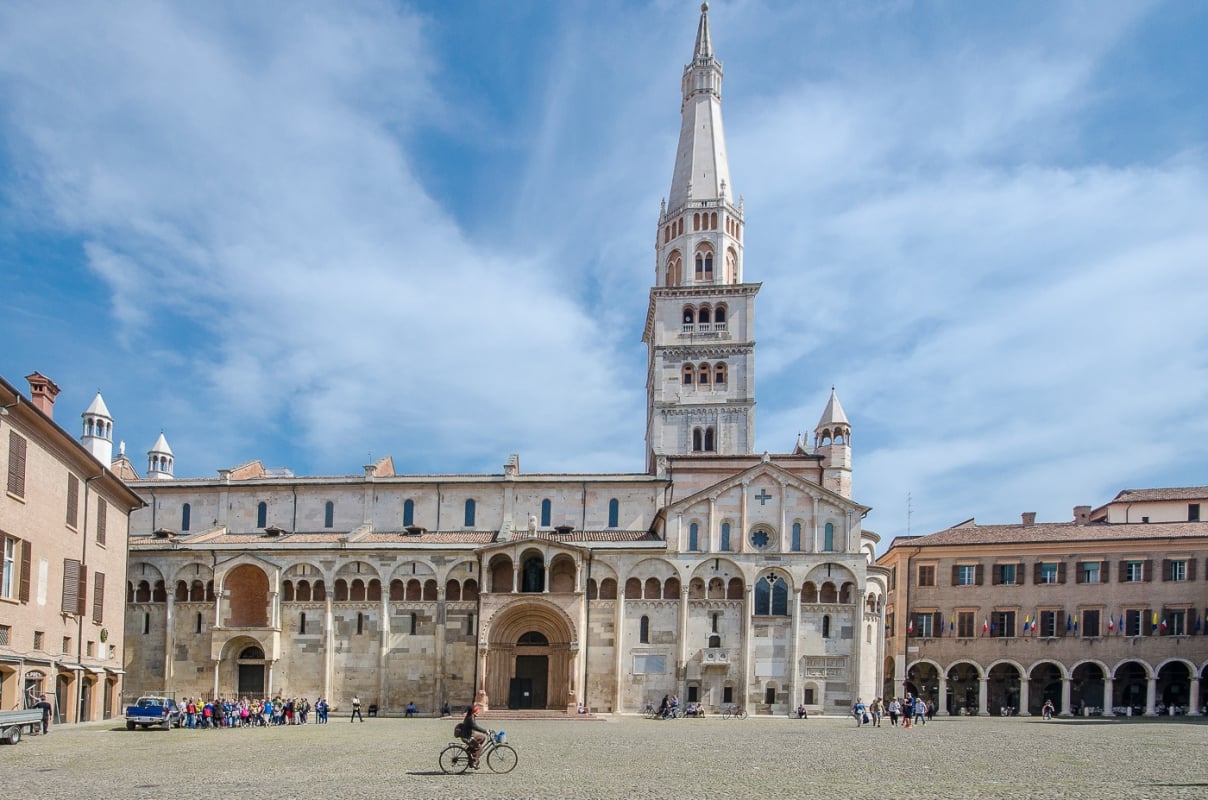
In Modena, within a few meters, we find three unique buildings, included since 1997 in the UNESCO list: Piazza Grande, the Cathedral, and its Ghirlandina tower considered the symbol of the city.
The Cathedral, built in the twelfth century by the joint work of two great artists, the architect Lanfranco and the sculptor Wiligelmo, is a supreme example of the early Romanesque art, proposed as an important model for the entire Romanesque in the Po Valley. The building is considered a masterpiece of human creative genius in which a new dialectic relationship between architecture and sculpture has been created.
With its square and slender tower, the work testifies to the power of the Canossa dynasty (who commissioned it) and the cultural traditions of that period: it is one of the best examples of an architectural complex combining religious and civil values in a medieval Christian city.
On November 8th, 2021 the Este city received another UNESCO recognition, becoming the first Italian city part of the UNESCO Creative Cities Network for Media Arts.
A big international reward that places Modena among the world cities that have identified creativity as a strategic factor for sustainable urban development.
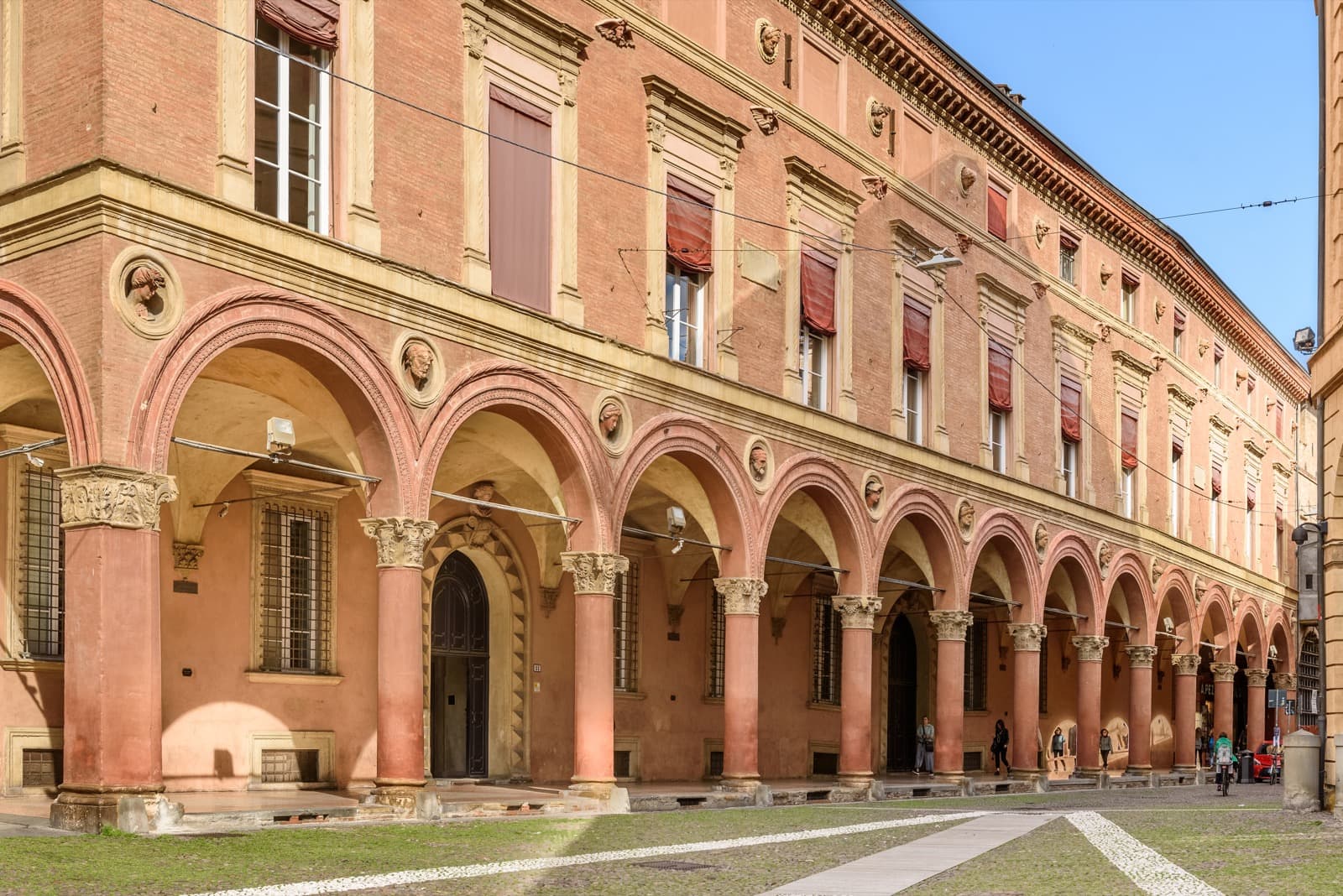
Since 2006, Bologna is one of the Creative Cities of Music, thanks to its rich musical tradition in continuous evolution and its commitment to promote music as a means of economic development and socio-cultural inclusion.
In the past centuries, Bologna has been a desired destination for the greatest musicians of Europe (such as Mozart, Liszt, Mendelssohn, Farinelli, Rossini, and Donizetti), who chose it as a home for short or long periods of their lives.
To the present day, Bologna has been the cradle of many famous contemporary pop artists (such as Andrea Mingardi, Francesco Guccini, Lucio Dalla, Gianni Morandi, Luca Carboni, Cesare Cremonini), it is the seat of the Mozart Orchestra, founded in 2004 by the Maestro Claudio Abbado, and hosts numerous places dedicated to the melodic art (such as the International Museum and Library of Music, the G. Pelagalli Museum of Communication and the Oratory of San Colombano which houses the collection of musical instruments of Maestro Luigi Ferdinando Tagliavini).
From the 50s Bologna is the European Capital of Jazz, thanks to the International Festival conceived by Alberto Alberti, and during the year a bunch of festivals enlivens the city, ranging from contemporary to classical music.
In 2021, after a long wait, the Porticoes of Bologna were also recognized as a World Heritage Site, in particular 12 groups of porticoes built from the 12th century to today, considered the most representative of the city’s arcades, which overall extend for 62 kilometers .
Defined as private property for public use, the arcades have become an expression and element of the urban identity of Bologna.
Staying in the Bologna area, we find two other sites listed by UNESCO as Messengers of a Culture of Peace: the Chiusa di Casalecchio di Reno, the oldest hydraulic work in Europe still in operation, and the Abbey of Santa Cecilia della Croara in San Lazzaro di Savena.
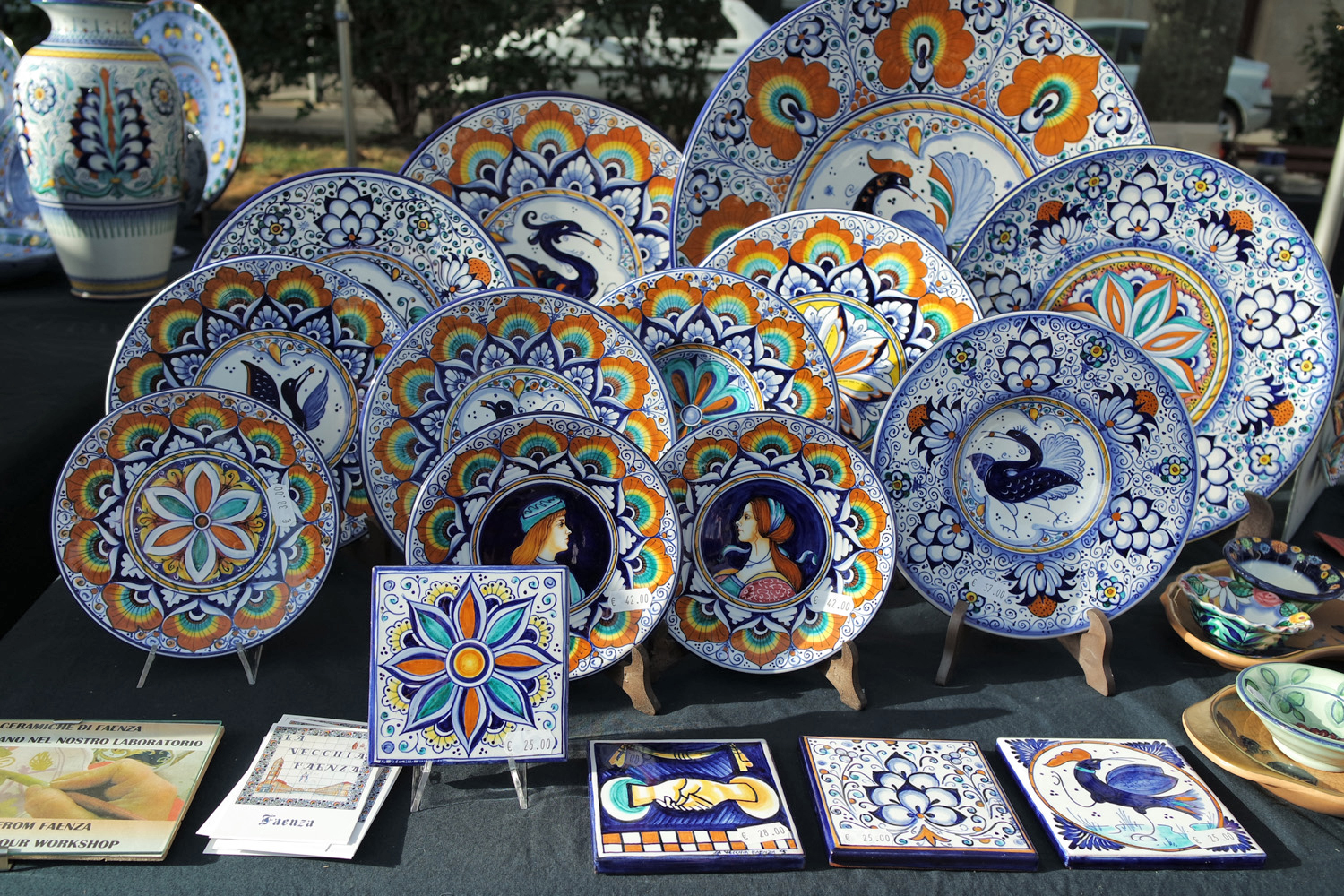
Another site listed as a Monument testifying a Culture of Peace is the International Museum of Ceramics in Faenza, for being an expression of ceramic art in the world. Founded in 1908, the Museum gathers about 60.000 works (of which 6.000 are on display), showing the ceramic productions of every age and continent, from the relics of ancient Mesopotamia to the artifacts of the greatest contemporary artists (such as Picasso, Matisse, Chagall, Fontana). According to UNESCO, the Museum is a reference point for ancient, modern and contemporary ceramics from all over the world, both for its precious collection and for the exceptional documentation kept in its library, which hosts more than 60.000 volumes and 400 periodicals.
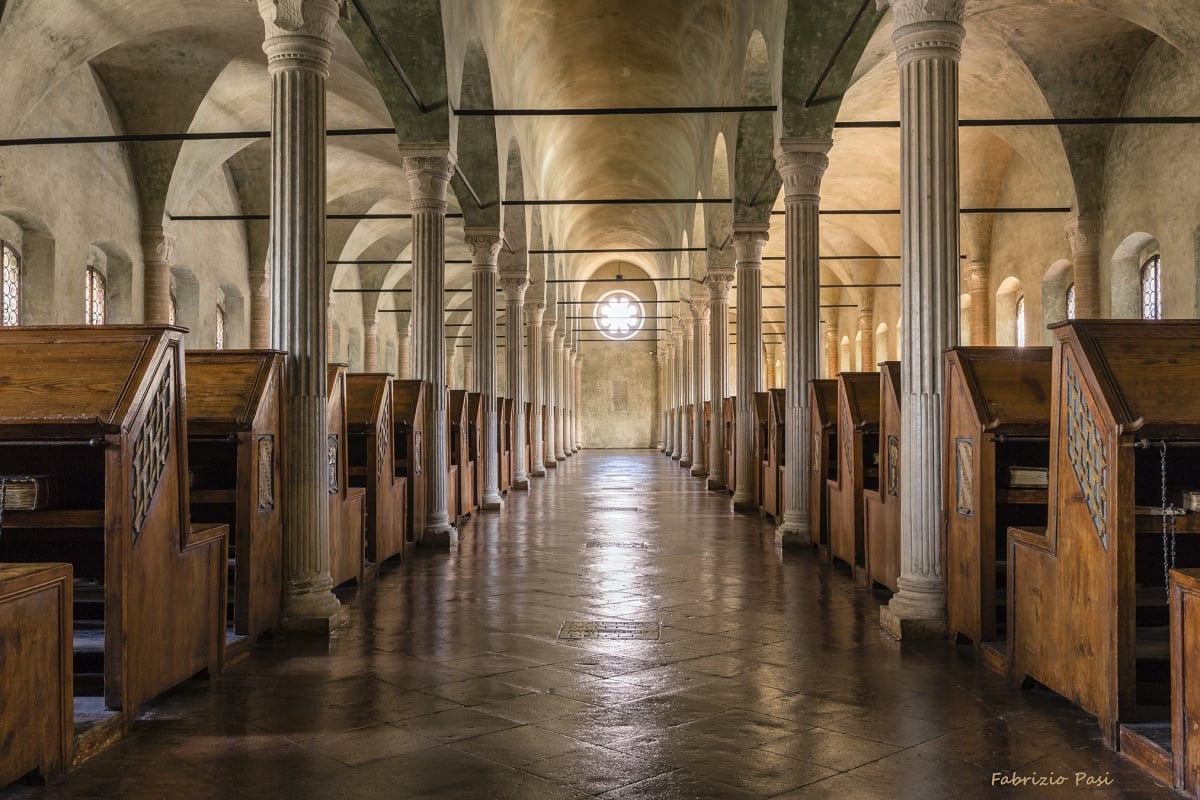
And what about Cesena? This sunny city of Romagna hosts the awesome Malatesta Library, the only place in Italy listed by UNESCO in the Memory of the World Register. This monastic library, built in the mid-fifteenth century, has particular importance as it holds two absolute primates: it has been the first civic library of Italy and Europe, and it is the only example of a humanistic monastic library that has survived to us perfectly preserved in the building, in the furnishings, and in the book endowment. Here you can find more than 287 incunabula, about 1.753 manuscripts, and over 17.000 letters.
According to historians, the ambiguous status of Malatesta Library (built as a public library but held by Franciscan friars) has been the main factor that protected it from damages and looting during the centuries.
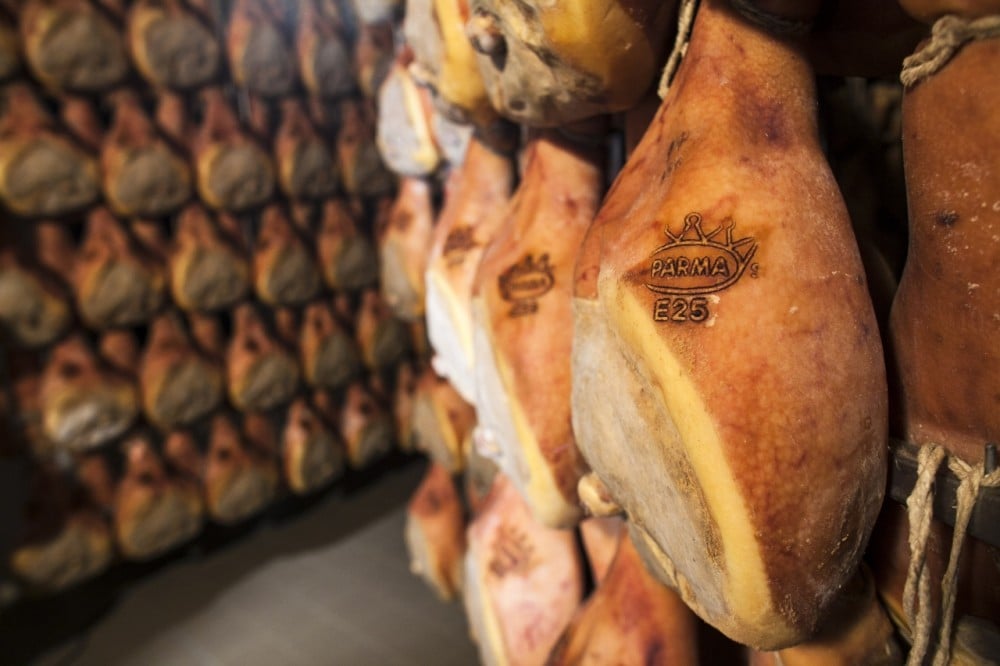
Prosciutto di Parma | Ph. Giorgio Salvatori
Maybe not everyone knows that also Parma boasts UNESCO recognition as the Creative City of Gastronomy, thanks to its long and refined culinary tradition. A prestigious recognition that rewards the city for the uniqueness of its gastronomic proposal and for the excellence of its local products.
Parma, along with the whole Food Valley, is universally known for its ability to preserve a gastronomic heritage without rivals, continuing to give the world products such as Parmigiano Reggiano and Prosciutto Crudo di Parma during the centuries.
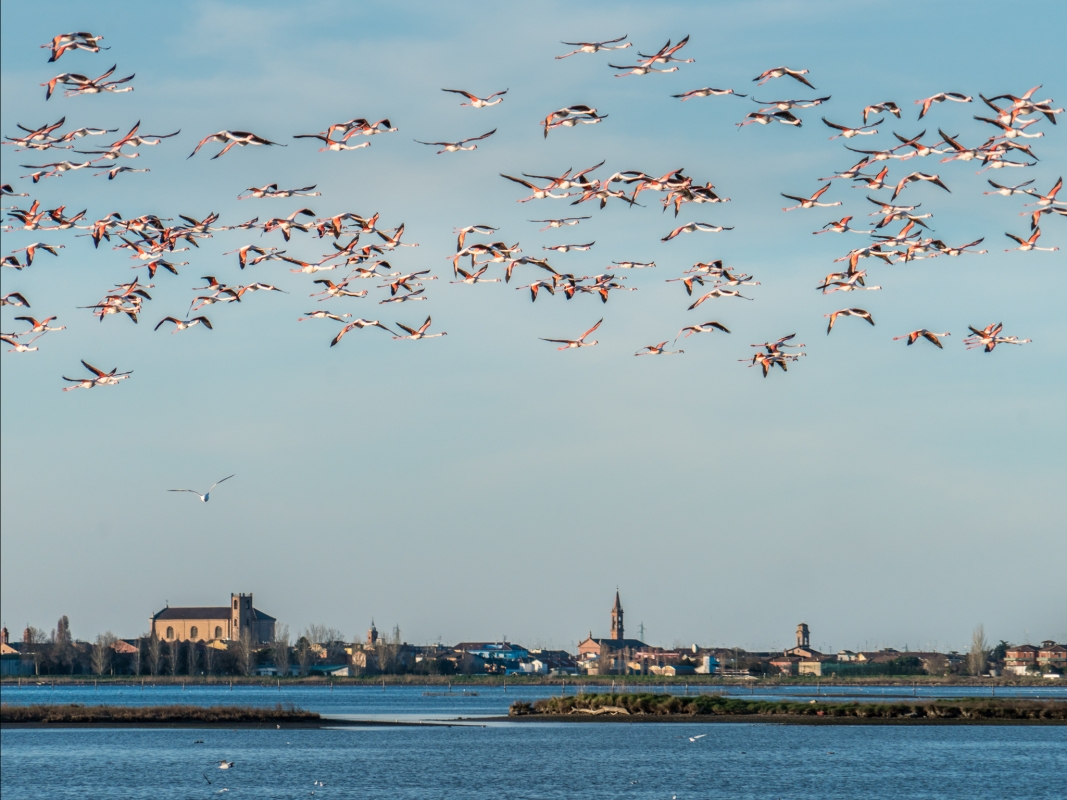
Since 2015 among the UNESCO Heritage of Emilia Romagna there are also the Appennino Tosco-Emiliano MAB Reserve and the Po Delta MAB Reserve.
The Man and the Biosphere Programme (MAB) is an intergovernmental scientific program that aims to establish a scientific basis for the improvement of relationships between people and their environments.
The Tosco-Emiliano Natural Park, one of the biggest in Italy, is located between Tuscany and Emilia Romagna and covers the whole ridge of the Apennines, which also marks the geographical border between the continental European climate and the Mediterranean one. The area hosts about 70% of the species present in total in Italy, including 122 species of birds, amphibians, reptiles, mammals, and fish, as well as a great variety of flora that includes at least 260 species of aquatic and terrestrial plants.
The Po Delta Natural Park, created by the confluence of the main branches of the river, comprises coastal dune systems and sand formations, lagoons, fishing ponds, marshes, fossil dunes, canals, and coastal pine forests, vast brackish wetlands, and cultivated lands dominated by rice farming. The area hosts over 360 species of birds including the purple heron and a colony of pink flamingos, which number over 10,000. The Cervo della Mesola is the only mammal to be found in the reserve, a red deer recognized as genetically distinct from other populations in Europe.
The last addition to the Emilia-Romagna’s MAB Reserves, in 2019, is the Po Grande area.
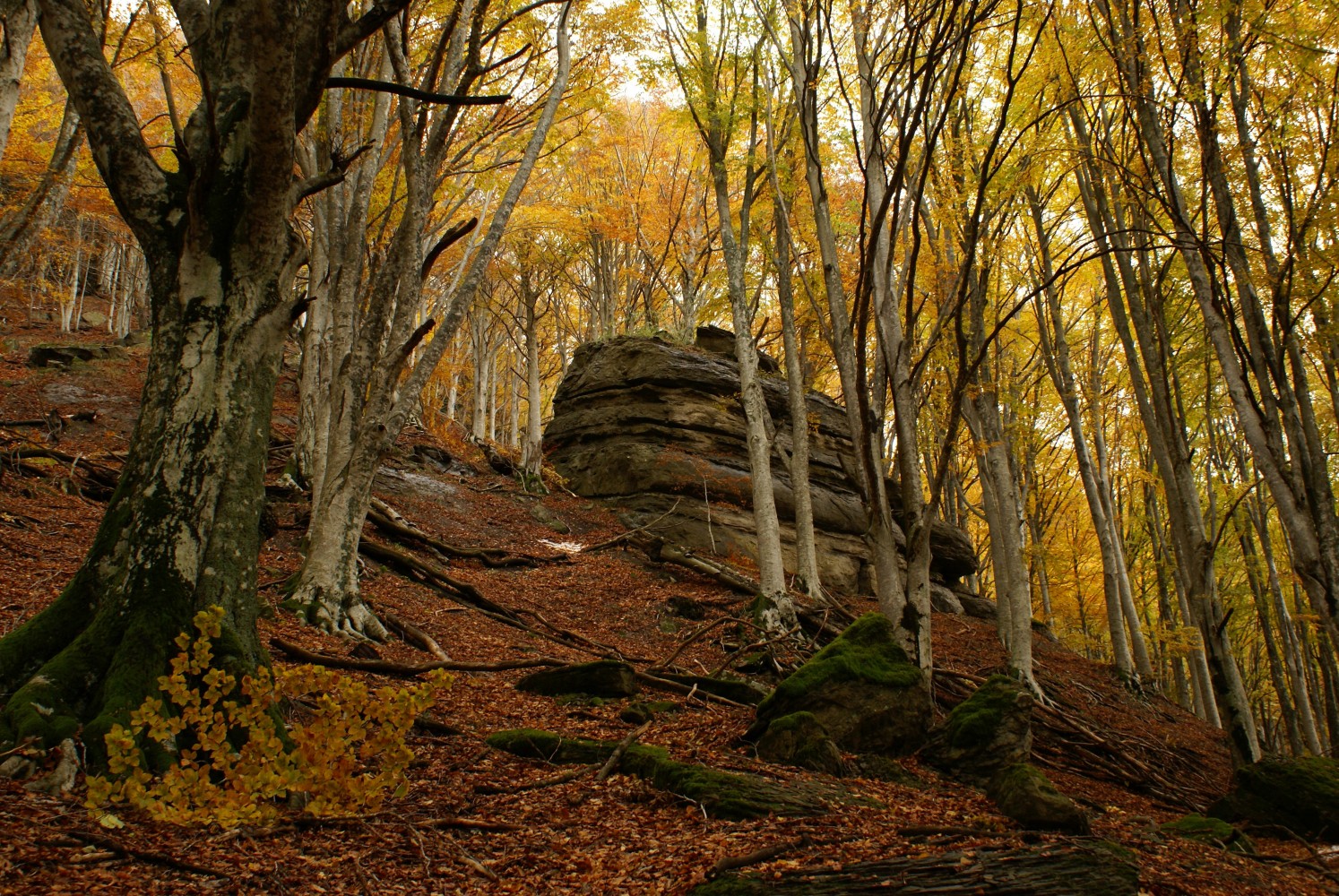
In 2017 another important natural heritage has been added to the UNESCO list: it is the ancient Beech Forests of the Foreste Casentinesi National Park, with its Sasso Fratino Integral Reserve, which joins the recognition already attributed to Beech Forests of the Carpathians and many other Regions of Europe. It is the largest area among those designated in Italy and one of the largest in Europe.
Each of the 10 Italian sites (our regional Beech Forests have entered the list along with other Italian ones inside the Abruzzo National Park, the Gargano National Park, the Pollino National Park, and the Regional Park of Bracciano and Mount Cimino) has been selected for its biological and ecological uniqueness, as characterizing element of the continental network, whose overall ecological peculiarity constitutes the real heritage to be safeguarded. In fact, it is the first natural heritage expressly listed for its global ecological value.
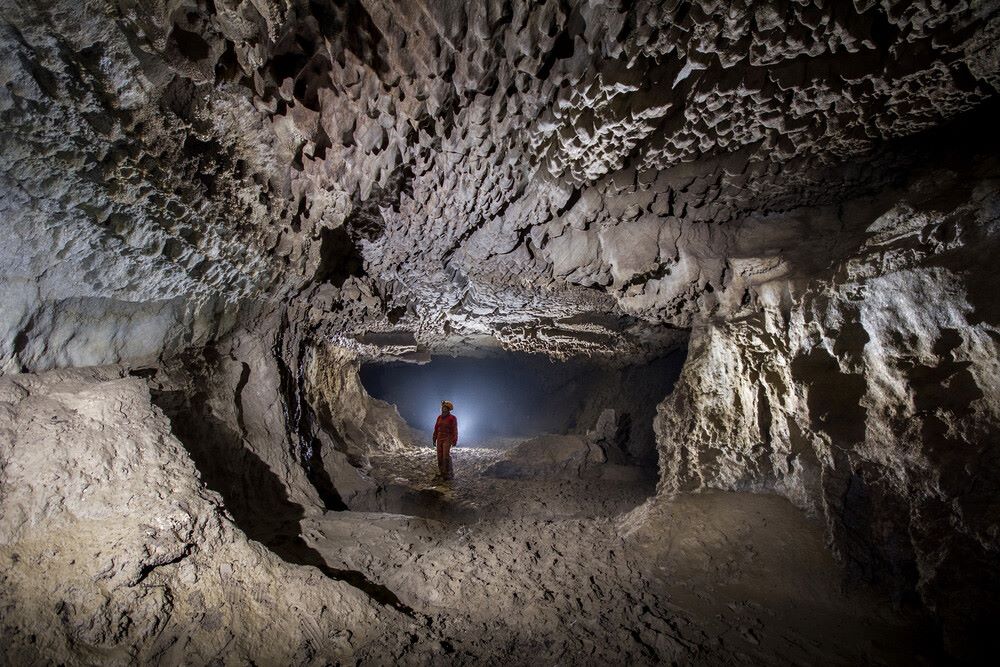
The latest recognition came in 2023, when no less than seven natural sites in Emilia-Romagna were included in the Unesco World Heritage list. These are the caves and evaporitic karst of the northern Apennines, which are scattered in various parts of the region. More than 900 caves reaching a depth of 265 metres below ground and stretching between the provinces of Reggio Emilia, Bologna, Rimini and Ravenna.
An ‘extraordinarily well-preserved and extensive’ complex, to use the words of Unesco, which specifically includes the Upper Secchia Valley, part of the Tuscan-Emilian Apennines National Park, and Lower Reggio Emilia Hills (Protected Landscape of the Reggio Emilia Hills); the Gypsum caves of Zola Predosa (Natura 2000 site) and Bologna Gypsum Caves in the Bolognese Gypsum and the Abbadessa Badlands Park; the Gypsum Vein of Romagna in the Ravenna area (Gypsum Vein of Romagna Regional Park) and finally the Evaporites of San Leo (Natura 2000 site) and the Gypsum caves of Eastern Romagna (Onferno Regional Nature Reserve) in the Rimini area.
Author

Walter Manni
Explorer and Adventurer: loves sailing the oceans, climbing the highest mountains and surfing on the waves of the web
You may also like
The Unesco Cities of Emilia-Romagna
by Davide Marino /// November 8, 2018
The Most Beautiful Churches and Cathedrals in Emilia-Romagna
by Davide Marino /// September 20, 2018

Interested in our newsletter?
Every first of the month, an email (in Italian) with selected contents and upcoming events.
The Po Delta Park in Emilia-Romagna
by Giulia Delaini /// April 23, 2018
The Tuscan-Emilian Apennine National Park
by Elisa Mazzini /// March 19, 2018
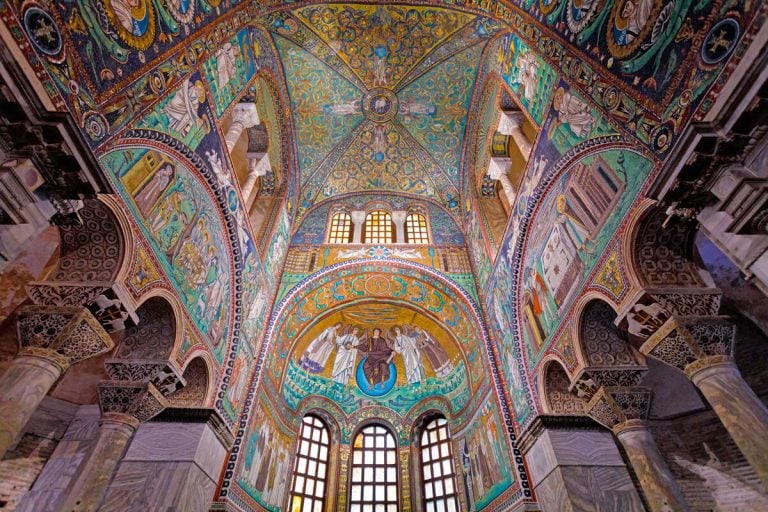
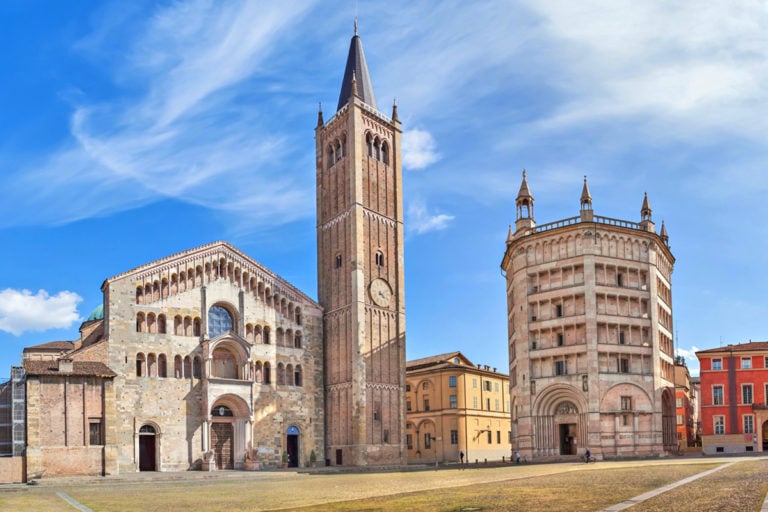
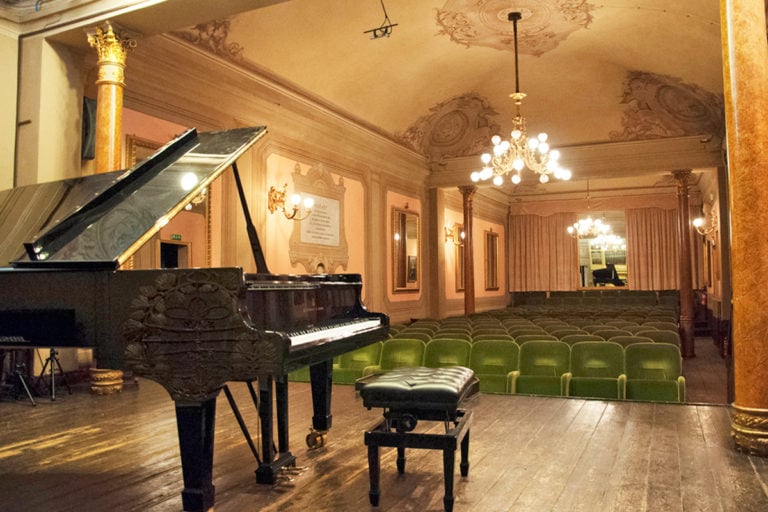
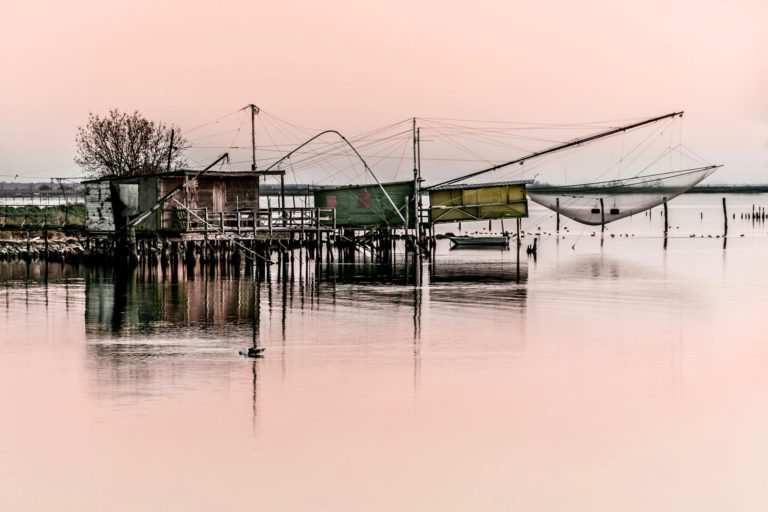
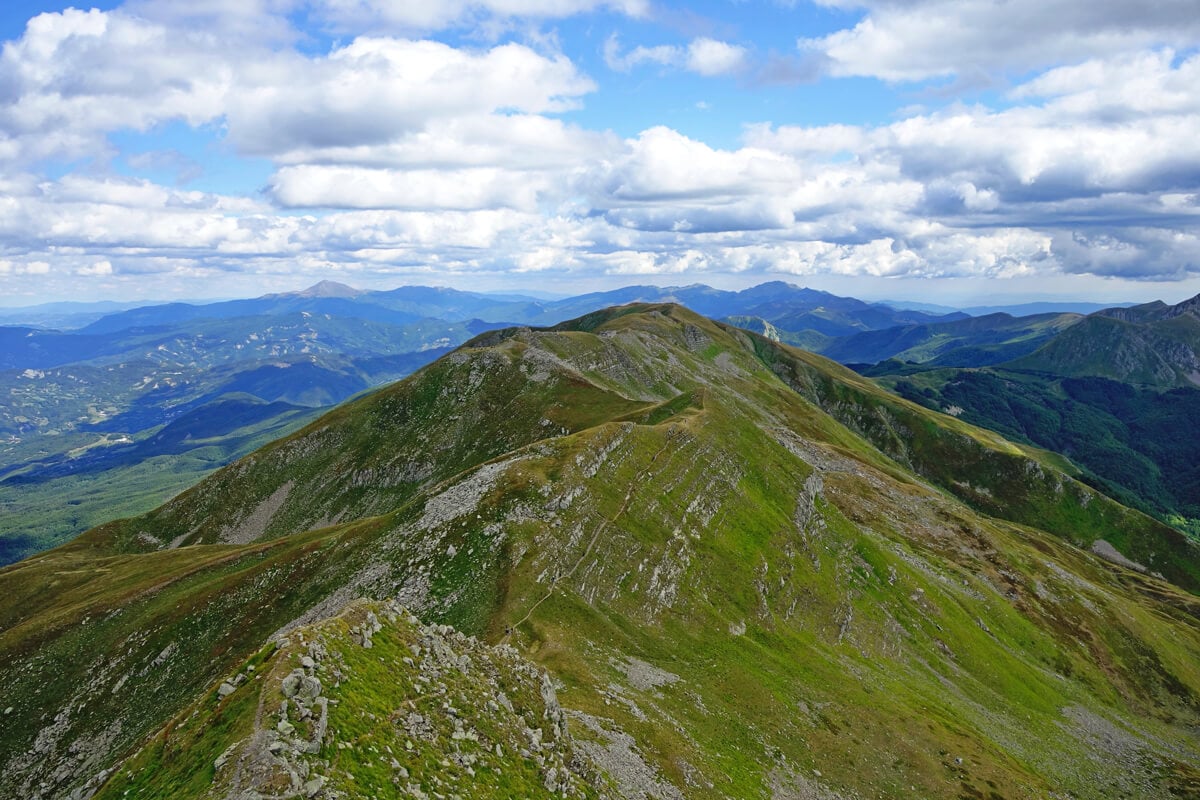
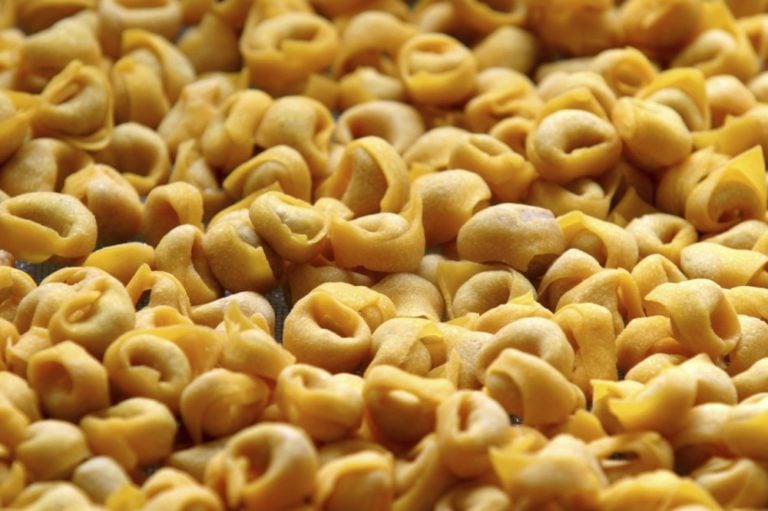
Maria Luisa Bencivenni
Questo soltanto?E’ assai ben poca cosa! Se ne potevan dire… Ma ce n’erano a iosa!!
Davide Marino
Buongiorno Maria Luisa, hai ragione! Non basterebbero migliaia di libri per raccontare la storia e tutti gli aspetti che caratterizzano il patrimonio Unesco della nostra regione.
Detto questo, però, necessità redazionali ci “costringono” ad essere sintetici e fornire ai nostri lettori le giuste suggestioni per far venire loro la voglia di scoprire dal vivo le bellezze dell’Emilia Romagna.
Davide – staff #inEmiliaRomagna